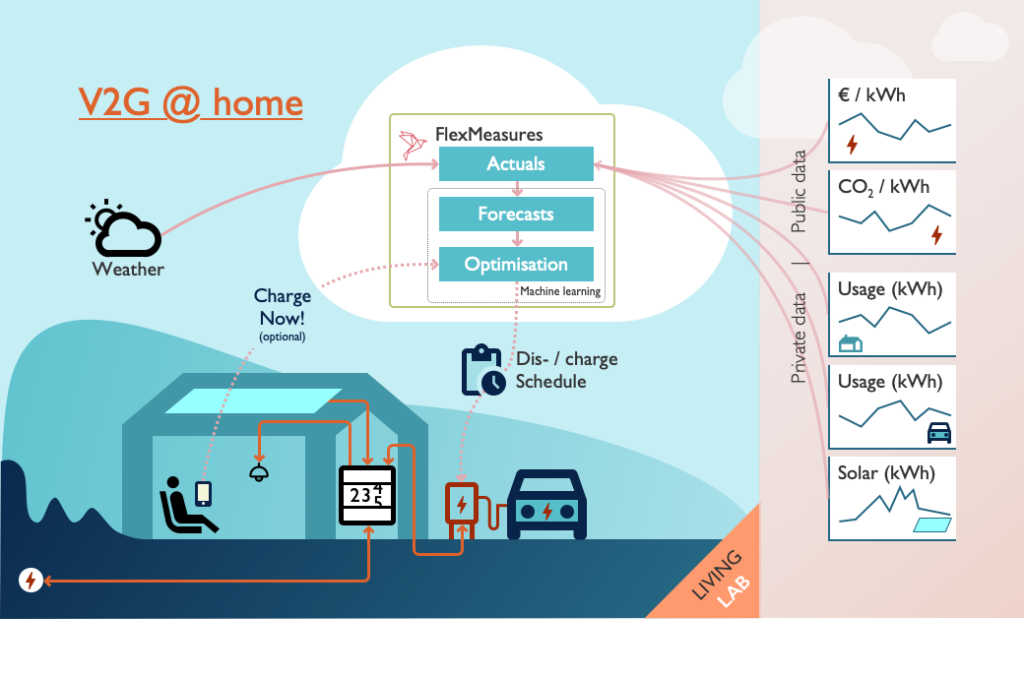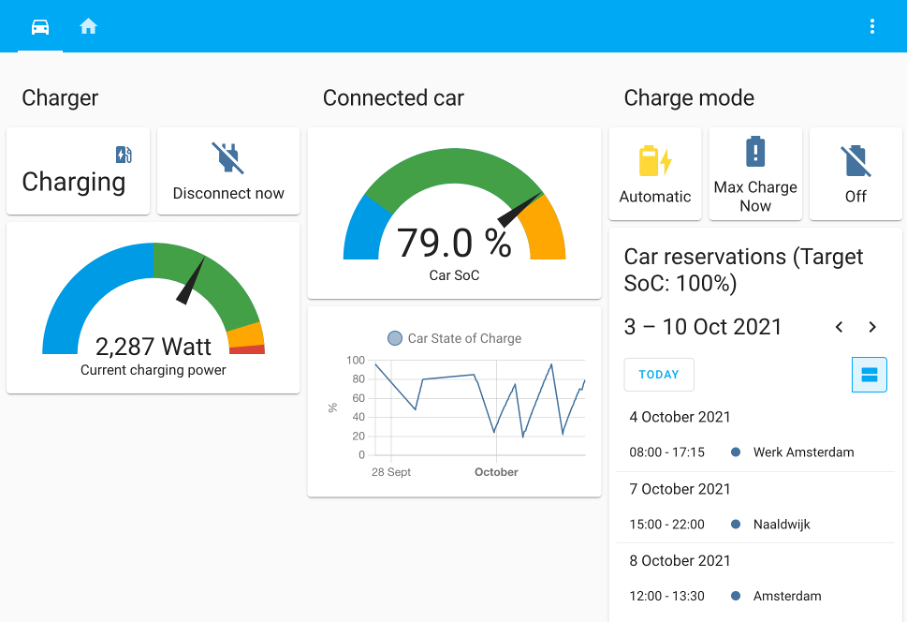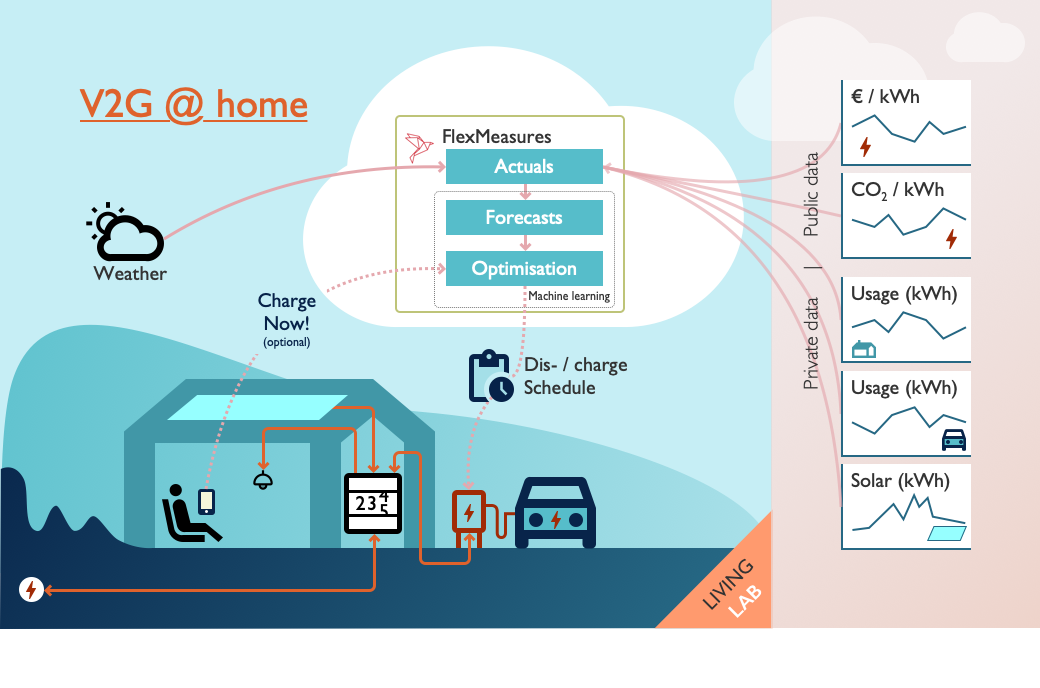The V2G@Home Living Lab we do together with Ard Jonker of Positive Design has closed the optimisation loop, with an eye on usability!
As stated before, optimizing charging in a V2G situation with flexible tariffs, fluctuating solar and random car usage requires smart machine learning in the cloud. This meant we have to bring FlexMeasures in the loop, but it’s crucial that we also allow the car owner to influence the scheduling targets from their phone in an easy manner.
This week, we did just that. We now control a Wallbox Quasar charger from our FlexMeasures (FM) platform. We added HomeAssistant (HA) to the mix for local control.

We had hoped to use the OCPP (Open Charge Point Protocol) to control the charger directly from FlexMeasures. Unfortunately, the Wallbox charger still awaits an upgrade for this open source protocol. But HomeAssistant impressed us so that we now consider using it as a standard part of our living lab.
We chose HomeAssistant because – like FlexMeasures – it is open source software. We believe HomeAssistant is mature, well maintained, customizable and it provides a good dashboard experience for the user. It supports modbus out of the box, which we currently need for communication with- and control over the charger.

So how does the user influence the charging? The HomeAssistant dashboard (see figure above) provides charge modes. “Automatic” means that FlexMeasures schedules the car (for this, we provided scripted bridges in HomeAssistant between FlexMeasures’ API and the Wallbox Quasar modbus protocol).
Setting the mode to “Charge now” or reserving the car with the calendar function can overwrite this. “Charge now” simply leads to charging the Nissan Leaf at maximum capacity right away. Reserving a time via the calendar means that FlexMeasures is told to get the car to 100% charge before that time. Fun Fact: The calendar integration means that any DAV-compatible calendar app can be used to schedule this charging behavior. Ard uses NextCloud, which is also open source! 🙂
This is the first version of our living lab with fully smart scheduling done in the cloud, but also easy ways for a user to stay in control!
I want to zoom out a bit for the bigger picture. This living lab is a demonstration in open innovation on a crucial energy flexibility service technology.
An energy flexibility service consists of several components that need interconnection. In our case, the car (Nissan Leaf) is connected to a bi-directional charger (Wallbox Quasar). The metering data underlying home consumption and solar production comes in via Aurum Europe’s API. The charging schedules are created by our FlexMeasures platform, running on our cloud.
Integration of these technologies is crucial here and in general in the diverse energy tech sector today. Open APIs (like Aurum has) help to make such integrations. But there is always a fear of lock-in. Open source has a strong case in these situations. As such, HomeAssistant and FlexMeasures provide the opportunity to build great systems with an eye on many integrations and strategic freedom.
That is why this living lab project is a great showcase!
We are still working on further optimization of the schedules and hope to share our first findings on money-, CO2 and other savings soon. We also will open source much of the V2G@Home integration code.
Get in touch if you want to co-create open innovation around vehicle-to-grid in domestic settings!







